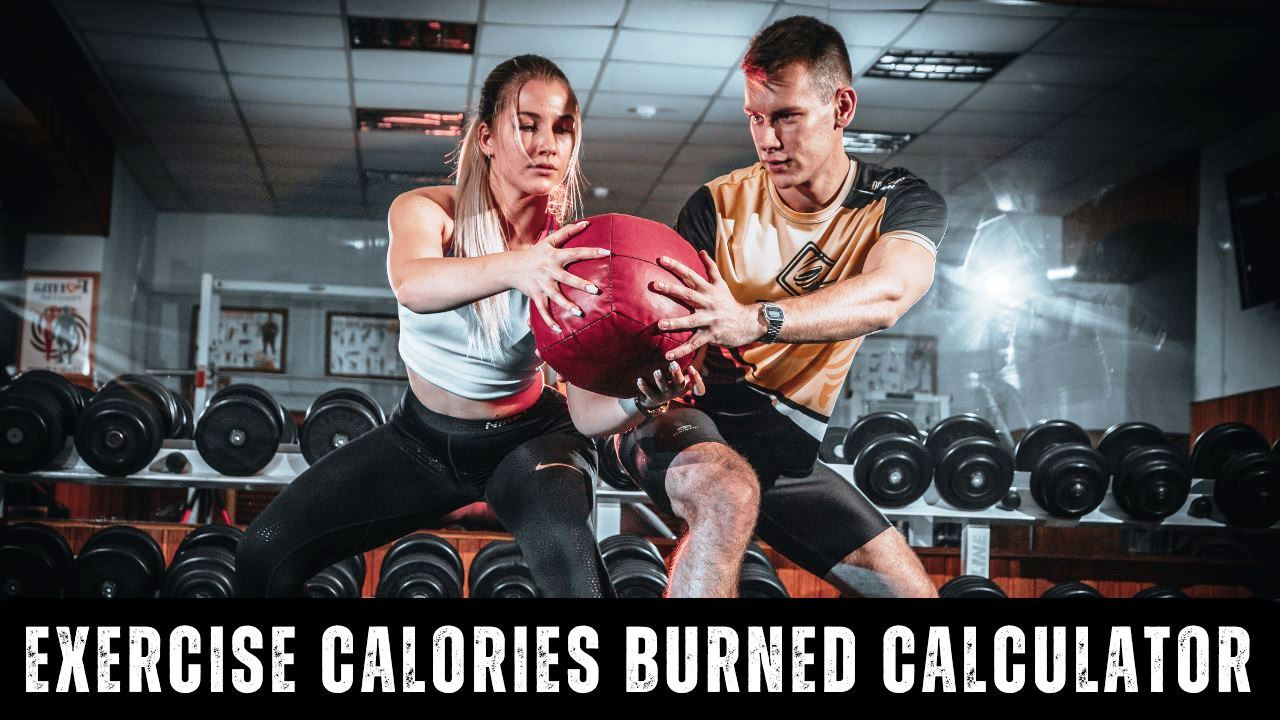Exercise Calorie Calculator
Advanced exercise energy expenditure calculator with scientific MET analysis for 150+ activities

How the Exercise Calorie Burned Calculator Works 🔍
Our Exercise Calorie Burned Calculator utilizes scientifically validated Metabolic Equivalent of Task (MET) values from the Compendium of Physical Activities. The calculator employs the standard exercise physiology formula used in research and clinical settings: Calories = (Time × MET × 3.5 × Weight) ÷ 200. This formula accounts for individual body weight, exercise duration, and activity intensity to provide personalized calorie estimates. Research published in Medicine & Science in Sports & Exercise validates this methodology for accurate energy expenditure assessment across diverse physical activities.
📈 MET Values and Exercise Classification
Our database includes 150+ activities with validated MET values ranging from 1.8 (sleeping) to 18.0 (competitive cross-country skiing). MET values represent the ratio of energy expenditure during activity to resting metabolic rate. Research studies demonstrate that MET-based calculations provide accuracy within 10-15% of laboratory measurements. Our calculator also incorporates intensity adjustments, allowing for personalized modifications based on perceived exertion levels, making it suitable for beginners to elite athletes.
🎯 Factors Affecting Exercise Calorie Burn
Multiple factors influence exercise energy expenditure: body weight (heavier individuals burn more calories), exercise intensity (higher effort increases calorie burn), duration (longer sessions burn more total calories), muscle mass (more muscle tissue increases metabolic rate), and fitness level (efficiency affects energy cost). Our calculator incorporates these variables through scientifically validated adjustments. Compare results with our running calorie calculator and cycling calorie calculator for comprehensive activity analysis.
Exercise Intensity Standards & MET Classifications 💪
| Activity Category | MET Range | Intensity Level | Examples | Calories/Hour (70kg) |
|---|---|---|---|---|
| Sedentary | 1.0-1.5 | Very Light | Sitting, Resting | 70-105 cal/hr |
| Light Activity | 1.6-2.9 | Light | Stretching, Yoga | 112-203 cal/hr |
| Moderate Activity | 3.0-5.9 | Moderate | Walking, Light Weight Training | 210-413 cal/hr |
| Vigorous Activity | 6.0-8.9 | Vigorous | Jogging, Cycling, Swimming | 420-623 cal/hr |
| Very Vigorous | 9.0-11.9 | Very Vigorous | Running, HIIT, Sports | 630-833 cal/hr |
| Extremely Vigorous | 12.0+ | Maximal | Competitive Sports, Sprint Training | 840+ cal/hr |
Note: Calorie values shown for a 70kg (154lb) individual. Actual values vary with body weight, fitness level, environmental conditions, and exercise efficiency. Individual metabolic variations can affect results by ±15%.
How Many Calories Do Different Exercises Burn Over Time? 🏋️♂️
⏱️ Time-Based Calorie Burn Estimates
The calorie burn during different exercises varies significantly based on the activity’s intensity (MET value), your body weight, and duration. Below are estimated calorie burns for popular exercises, based on scientific research from the Compendium of Physical Activities. These values help you plan effective workouts for fitness goals and weight management. For comprehensive tracking, explore our BMR calculator to understand your daily caloric needs.
| Exercise (MET) | 30 mins 150 lb |
30 mins 175 lb |
30 mins 200 lb |
60 mins 150 lb |
60 mins 175 lb |
60 mins 200 lb |
|---|---|---|---|---|---|---|
| Running, 8 mph (11.8) | 709 cal | 827 cal | 945 cal | 1418 cal | 1654 cal | 1890 cal |
| Swimming, vigorous (10.0) | 600 cal | 700 cal | 800 cal | 1200 cal | 1400 cal | 1600 cal |
| Cycling, vigorous (8.0) | 480 cal | 560 cal | 640 cal | 960 cal | 1120 cal | 1280 cal |
| Weight Training (6.0) | 360 cal | 420 cal | 480 cal | 720 cal | 840 cal | 960 cal |
| Walking, brisk (5.0) | 300 cal | 350 cal | 400 cal | 600 cal | 700 cal | 800 cal |
| Yoga, general (2.3) | 138 cal | 161 cal | 184 cal | 276 cal | 322 cal | 368 cal |
Note: Values based on standardized MET calculations. Individual results may vary based on fitness level, exercise technique, environmental conditions, and metabolic efficiency. These estimates provide excellent baseline references for workout planning.
Maximizing Your Exercise Calorie Burn 🔥
⚡ High-Intensity Training Strategies
Interval Training: Alternating between high and moderate intensity maximizes calorie burn both during and after exercise (EPOC effect).
HIIT workouts can increase total session calorie burn by 25-40% compared to steady-state exercise.
Try our HIIT workout plans
for structured high-intensity training.
Compound Movements: Exercises that engage multiple muscle groups simultaneously burn more calories than isolation exercises.
Compound leg exercises
and multi-joint chest movements
maximize energy expenditure per unit time.
💪 Strength Training for Enhanced Calorie Burn
Progressive Overload: Gradually increasing weight, reps, or intensity maintains high calorie burn as fitness improves.
Progressive strength training
builds lean muscle mass, which increases resting metabolic rate.
Circuit Training: Moving between exercises with minimal rest maintains elevated heart rate and maximizes calorie burn.
Circuit training can burn 30-50% more calories than traditional weight training.
Support your training with adequate protein intake
for muscle recovery and growth.
🎯 Optimizing Exercise Selection
Activity Choice: Select exercises with higher MET values for maximum calorie burn efficiency.
Running, swimming, and cycling typically offer the highest calorie burn rates.
Swimming workouts
provide excellent full-body calorie burn with low joint impact.
Duration vs. Intensity: Both duration and intensity affect total calorie burn.
Higher intensity exercises burn more calories per minute but may limit total workout duration.
Find your optimal balance using our VO2 max calculator
to understand your aerobic capacity.
Exercise Calorie Calculator FAQs 💪
❓ How accurate is the exercise calorie calculator?
Our calculator uses the scientifically validated formula: Calories = (Time × MET × 3.5 × Weight) / 200, combined with research-based MET values from the Compendium of Physical Activities. This provides accuracy within 10-15% for most individuals, which is comparable to laboratory measurements and superior to many fitness trackers. Individual variations in metabolism, fitness level, and exercise efficiency can affect results.
🏋️♂️ Why does exercise intensity affect calorie burn?
Exercise intensity directly impacts energy expenditure through increased heart rate, oxygen consumption, and muscle activation. Higher intensity exercises recruit more muscle fibers and require greater cardiovascular output, exponentially increasing calorie burn. Our intensity adjustments modify base MET values to reflect individual effort levels, providing personalized calorie estimates.
⚖️ How does body weight affect exercise calories?
Larger body mass requires more energy to move and maintain during exercise, resulting in higher calorie burn. The relationship is linear: a 20% increase in body weight typically results in approximately 20% more calories burned for the same activity. This is why our calculator includes body weight as a primary variable in all calculations. Compare with our weight loss calculator for comprehensive planning.
🔄 Can I compare different exercises for calorie burn?
Yes! Our calculator allows you to compare calorie burn across 150+ activities by maintaining consistent personal parameters (weight, duration, intensity) while changing exercise type. This helps optimize workout selection based on calorie burn goals, time availability, and personal preferences. Higher MET value activities generally provide greater calorie burn efficiency.
📱 Can I track my progress over time?
Our export feature creates CSV files compatible with fitness apps and training logs, allowing you to track calorie burn patterns, identify effective exercises, and monitor progress. Regular tracking helps optimize workout selection and intensity. Combine with our MET calculator and TDEE calculator for comprehensive fitness tracking.
🎯 How can I maximize my exercise calorie burn?
To maximize calorie burn: 1) Choose high-MET activities (running, swimming, cycling), 2) Incorporate interval training, 3) Increase workout duration gradually, 4) Add resistance training to build muscle mass, and 5) Maintain proper form and intensity. Higher intensity exercises and compound movements that engage multiple muscle groups provide the greatest calorie burn efficiency per unit time.
⚕️ Health & Safety Disclaimer
This exercise calorie calculator provides estimates based on scientific formulas and should not replace professional medical advice or certified fitness guidance. Calorie estimates are most accurate when combined with comprehensive health assessments including cardiovascular fitness testing, body composition analysis, and metabolic rate measurements. Individual results may vary due to genetic factors, health conditions, medications, fitness level, and exercise technique. The intensity guidelines are based on population studies and may not apply to all individuals. Consult with healthcare professionals, certified personal trainers, or exercise physiologists before beginning intensive exercise programs, especially if you have pre-existing health conditions, injuries, or take medications. This tool is for educational and informational purposes only and should not be used as the sole basis for exercise or nutrition decisions.
References
- Ainsworth BE, Herrmann SD, Jacobs Jr. DR, Whitt-Glover MC, Tudor-Locke C. A brief history of the Compendium of Physical Activities. Journal of Sport and Health Science, 2024;13(1): 3-5.
- Herrmann SD, Willis EA, Ainsworth BE, Barreira TV, Hastert M, Kracht CL, Schuna Jr. JM, Cai Z, Quan M, Tudor-Locke C, Whitt-Glover MC, Jacobs DR. 2024 Adult Compendium of Physical Activities: A third update of the energy costs of human activities. Journal of Sport and Health Science, 2024;13(1): 6-12.
- Conger SA, Herrmann SD, Willis EA, Nightingale TE, Sherman JR, Ainsworth BE. 2024 Wheelchair Compendium of Physical Activities: An update of activity codes and energy expenditure values. Journal of Sport and Health Science, 2024;13(1): 18-23.
- Wilkin LD, Cheryl A, Haddock BL. Energy expenditure comparison between walking and running in average fitness individuals. J Strength Cond Res. 2012 Apr;26(4):1039-44. doi: 10.1519/JSC.0b013e31822e592c. PMID: 22446673.
- Williams PT. Greater weight loss from running than walking during a 6.2-yr prospective follow-up. Med Sci Sports Exerc. 2013 Apr;45(4):706-13. doi: 10.1249/MSS.0b013e31827b0d0a. PMID: 23190592; PMCID: PMC4067491.
- Okmayura, Finanta & Jefiza, Adlian & Ramadhani, Witri. (2020). The Calorie Burning Calculation System in Jogging Using a Thresholding-Based Accelerometer Sensor. Kinetik: Game Technology, Information System, Computer Network, Computing, Electronics, and Control. 5. 103-110. 10.22219/kinetik.v5i2.1005.

Manish is a NASM-certified fitness and nutrition coach with over 10 years of experience in weight lifting and fat loss fitness coaching. He specializes in gym-based training and has a lot of knowledge about exercise, lifting technique, biomechanics, and more.
Through “Fit Life Regime,” he generously shares the insights he’s gained over a decade in the field. His goal is to equip others with the knowledge to start their own fitness journey.
